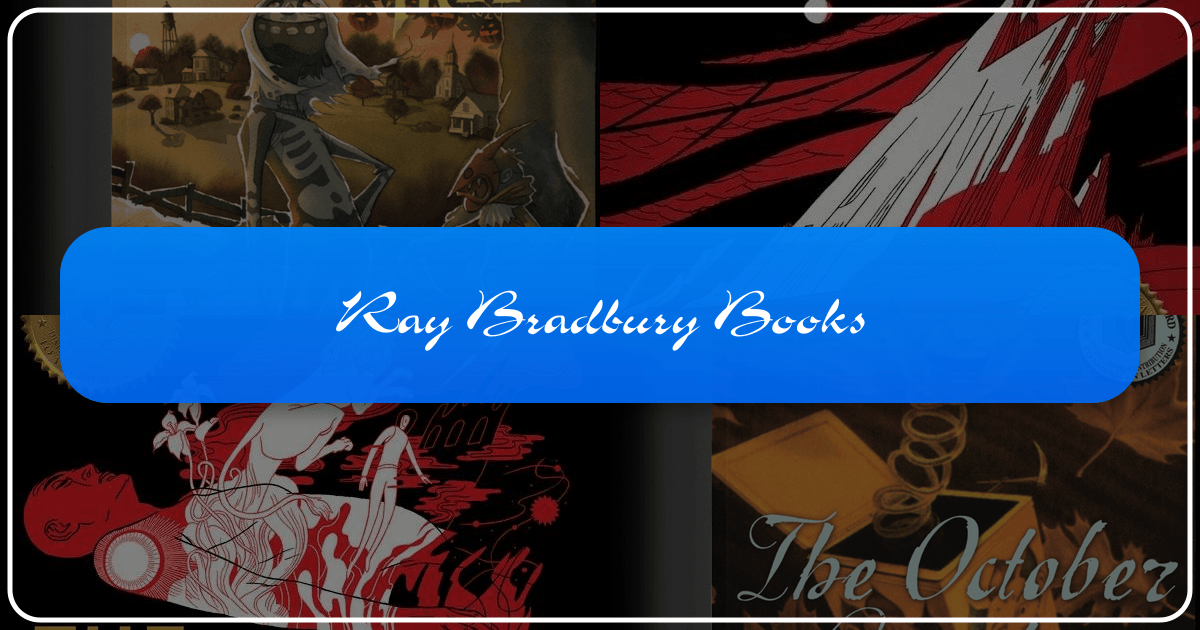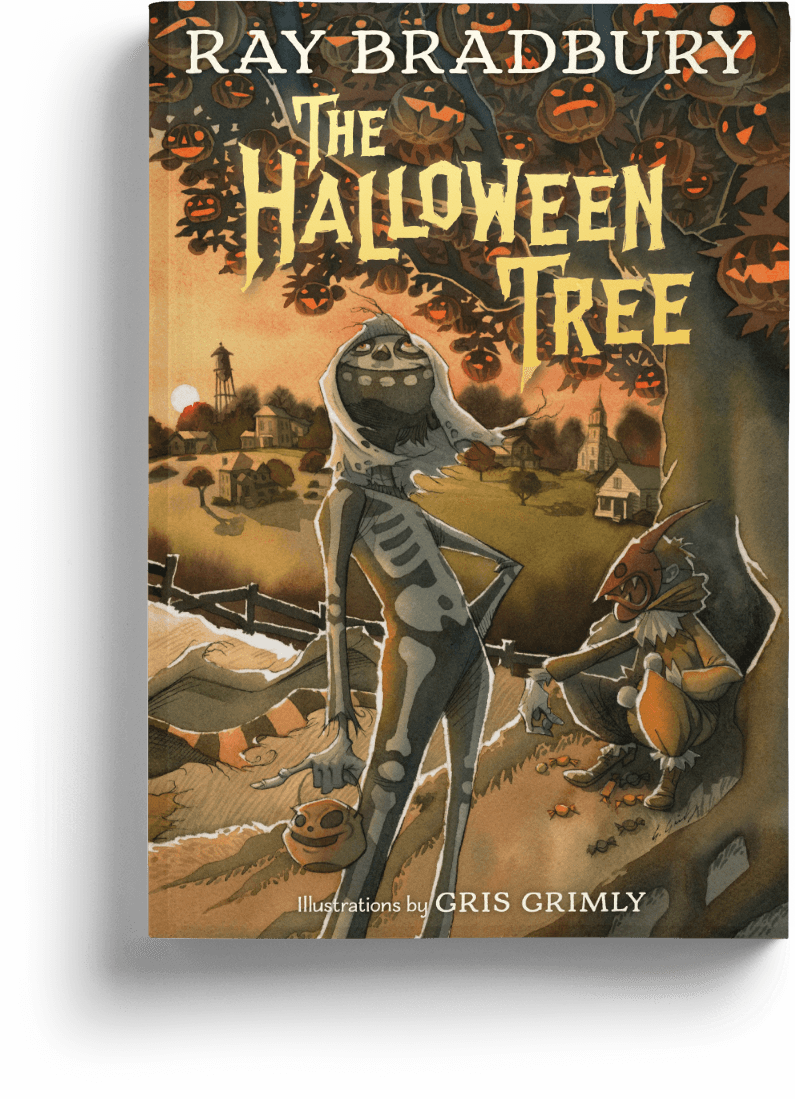Ray Bradbury Books: A Comprehensive Guide to the Works of a Literary Master

Ray Bradbury, a name synonymous with imaginative storytelling and lyrical prose, remains one of the most influential and beloved authors of the 20th century. His works transcend genre boundaries, seamlessly blending science fiction, fantasy, horror, mystery, and coming-of-age narratives into a unique and captivating tapestry of human experience. From dystopian futures to idyllic pasts, Bradbury’s stories explore the depths of the human condition with a depth and beauty rarely matched. This comprehensive guide delves into the vast landscape of Ray Bradbury’s literary creations, offering both seasoned fans and newcomers a comprehensive exploration of his oeuvre.
Ray Bradbury’s Novels: A Journey Through Time and Imagination
Ray Bradbury’s 11 published novels showcase his remarkable versatility and thematic depth. Each novel, while distinct in its setting and specific plot, reflects Bradbury’s recurring concerns with humanity’s relationship with technology, the power of storytelling, and the enduring importance of memory and imagination.

The Martian Chronicles (1950): A Pioneering Saga of Colonialism and Loss
Bradbury’s debut novel, The Martian Chronicles, is not a traditional novel in the strictest sense. Instead, it’s a collection of interconnected short stories, woven together by a framing narrative that chronicles the colonization of Mars by Earthlings following a devastating nuclear war. The stories, many of which were published individually before the novel’s compilation, depict the clash between the American Dream and the reality of colonial exploitation, exploring themes of environmental destruction, cultural displacement, and the fragility of human connection. Bradbury himself described the influence of Sherwood Anderson’s Winesburg, Ohio, stating that he aspired to create a similar work, but set on the fascinating backdrop of Mars. The novel’s enduring appeal lies in its evocative prose and its exploration of timeless themes that resonate powerfully with modern readers. It has inspired numerous adaptations, including an opera, video game, and various television serials.
Fahrenheit 451 (1953): A Dystopian Masterpiece on Censorship and Conformity

Arguably Bradbury’s most famous work, Fahrenheit 451 is a chilling dystopian novel that warns against the dangers of censorship and conformity. Set in a future where books are outlawed and firemen burn any they find, the story follows Guy Montag, a fireman who begins to question his role in suppressing knowledge and the human spirit. The novel, written during the McCarthy era and inspired by the Nazi book burnings, explores the seductive power of mass media, the importance of individual thought, and the resilience of the human spirit in the face of oppression. Fahrenheit 451 remains strikingly relevant today, serving as a cautionary tale about the fragility of intellectual freedom and the seductive allure of superficiality. Its powerful themes have led to numerous film, stage, and video game adaptations.
Dandelion Wine (1957): A Nostalgic Coming-of-Age Tale
Expanding on a short story of the same name, Dandelion Wine is a poignant coming-of-age novel set in the idyllic small town of Green Town, Illinois, a clear reflection of Bradbury’s own childhood experiences. The novel centers on twelve-year-old Douglas Spaulding’s summer adventures, exploring the bittersweet passage of time and the fleeting nature of childhood innocence. The novel captures the vibrancy of summer, contrasted with the melancholic realization that these moments are ephemeral, forever etched in memory. Dandelion Wine, though vastly different from his dystopian works, displays Bradbury’s mastery of evoking emotion and capturing the essence of a specific time and place.

Something Wicked This Way Comes (1962): A Dark Carnival of Good and Evil
Shifting from idyllic summers to the sinister allure of a dark carnival, Something Wicked This Way Comes is a coming-of-age tale that seamlessly blends fantasy and horror. A mysterious carnival arrives in Green Town, Illinois, on an autumn evening, tempting two young boys with seemingly innocent rides and games that conceal hidden horrors. The novel explores the timeless battle between good and evil, innocence and corruption, and the transformative power of experience. Its dark carnival setting and powerful themes have solidified its place as a classic in both fantasy and horror literature.
The Halloween Tree (1972): A Time-Traveling Celebration of Halloween
The Halloween Tree is a unique entry in Bradbury’s bibliography, showcasing his love for the Halloween season. The story follows a group of costumed trick-or-treaters who embark on a time-traveling adventure guided by the mysterious Mr. Moundshroud. Their journey through history reveals the origins of Halloween traditions, while also exploring the deeper meanings of life, death, and the enduring power of storytelling. Initially a collaboration with animator Chuck Jones, the story was later adapted into an Emmy-winning animated film.
Death Is a Lonely Business (1985): A Semi-Autobiographical Mystery
A departure from Bradbury’s science fiction and fantasy, Death Is a Lonely Business is a mystery novel that draws upon the author’s own early experiences as a struggling writer in Venice Beach. The novel follows an unnamed writer investigating a series of murders that seem connected to the characters in his stories. This semi-autobiographical work provides unique insight into Bradbury’s creative process and challenges, blending elements of his personal life into a gripping fictional narrative.
A Graveyard for Lunatics (1990): A Hollywood Halloween Mystery
Five years after Death Is a Lonely Business, Bradbury presents the second part of his Hollywood mystery series: A Graveyard for Lunatics. This novel, deeply infused with Bradbury’s own experiences as a screenwriter in 1940s and 1950s Hollywood, depicts a mysterious investigation in and around a Hollywood movie studio backlot on Halloween night. The story combines elements of mystery, horror, and fantasy, showcasing Bradbury’s ability to create a richly atmospheric narrative.
Green Shadows, White Whale (1992): A Fictionalized Account of Moby Dick’s Adaptation
Green Shadows, White Whale offers a fascinating glimpse into the creative process behind the 1956 film adaptation of Moby Dick, directed by John Huston and starring Gregory Peck. Based on Bradbury’s own experience working on the screenplay, the novel provides a fictionalized account of the collaboration and the challenges faced in adapting a classic work of literature for the screen. This novel showcases Bradbury’s engagement with film, and the creative process itself, and is an insightful account of film production.
From the Dust Returned (2001): A Fix-Up Fantasy Novel
From the Dust Returned is a fix-up novel, meaning it’s constructed from previously published and new short stories, stitched together to form a cohesive narrative. The story revolves around the extraordinary Elliott family, whose members possess remarkable abilities and a history stretching back millennia. This fantastical tale explores themes of family, destiny, and the passage of time, demonstrating Bradbury’s continued creativity in blending fantasy with his trademark evocative prose.
Let’s All Kill Constance (2002): A Hollywood Intrigue Mystery
The final novel in Bradbury’s Hollywood mystery trilogy is Let’s All Kill Constance. The story focuses on the mysterious aging Hollywood actress Constance Rattigan, whose life is intertwined with the narrative, and involves two intriguing books that predict her death. The unnamed narrator and private investigator Elmo Crumley must solve the mystery, which involves twists and turns that leave the reader questioning the line between fiction and reality.
Farewell Summer (2006): A Reflection on Childhood and Aging
Farewell Summer serves as a sequel to Dandelion Wine, revisiting the characters and themes of the original novel. The story explores both the joys of childhood and the complexities of aging, revisiting the idyllic summer setting and exploring the passage of time with a mixture of nostalgia and reflection. It’s a melancholic and poignant exploration of the human lifespan, reminiscent of Bradbury’s earlier coming-of-age narratives, but with the added perspective of a lifetime’s reflection.
Ray Bradbury’s Short Story Collections: A Kaleidoscope of Genres and Themes
Bradbury’s prolific output extended beyond novels, with numerous short story collections showcasing the breadth of his imagination and his mastery of various literary genres.
The Illustrated Man (1951): A Collection of Tales Told Through Tattoos
The Illustrated Man presents a series of interconnected short stories, each inspired by a tattoo on the body of the titular character. These stories showcase Bradbury’s range, covering science fiction, fantasy, and horror, and explore a variety of themes, such as technology’s impact on humanity, the power of imagination, and the complexities of human relationships.
The October Country (1955): Exploring the Macabre and Fantastical
The October Country delves into the darker side of Bradbury’s imagination, focusing on tales of the macabre and fantastical. The collection showcases his skill in evoking atmosphere and exploring the unsettling aspects of the human psyche, weaving together elements of horror and dark fantasy.
The Stories of Ray Bradbury (1980): A Career-Spanning Anthology
The Stories of Ray Bradbury offers a comprehensive overview of Bradbury’s short fiction, drawing from a large number of his collected works. This anthology represents the best of Bradbury’s imagination, showcasing his diverse themes and his consistent mastery of language.
Yestermorrow (1991): Essays, Poems, and Reflections on the Human Condition
Yestermorrow presents a unique selection of Bradbury’s nonfiction writing, including essays, poems, and reflections on various aspects of life and society. These works explore Bradbury’s philosophy, his creative process, and his perspective on the past, present, and future of humanity.
Zen in the Art of Writing (1989): Bradbury on Creativity and the Writing Process
In Zen in the Art of Writing, Bradbury shares his insights on the creative process and the art of writing itself. Through insightful essays, Bradbury offers advice and inspiration for aspiring writers, combining personal reflections with wisdom acquired throughout his acclaimed career.
Ray Bradbury’s Cultural Impact: A Legacy of Literary Influence
Ray Bradbury’s enduring legacy extends beyond the pages of his books, profoundly shaping the cultural landscape through adaptations, awards, and the ongoing inspiration he provides to writers and readers alike. His works have been adapted into films, television series, plays, and video games, further disseminating his powerful messages to a vast audience. His influence is evident in the works of countless writers, and his ability to capture human emotions in breathtaking prose remains a testament to his unique talents.
This guide only scratches the surface of Ray Bradbury’s vast and influential body of work. Each book presents a unique journey through his rich and complex imagination, leaving a lasting impact on the reader long after the final page is turned. Exploring his novels and short stories offers a remarkable opportunity to engage with one of the true masters of 20th-century literature.